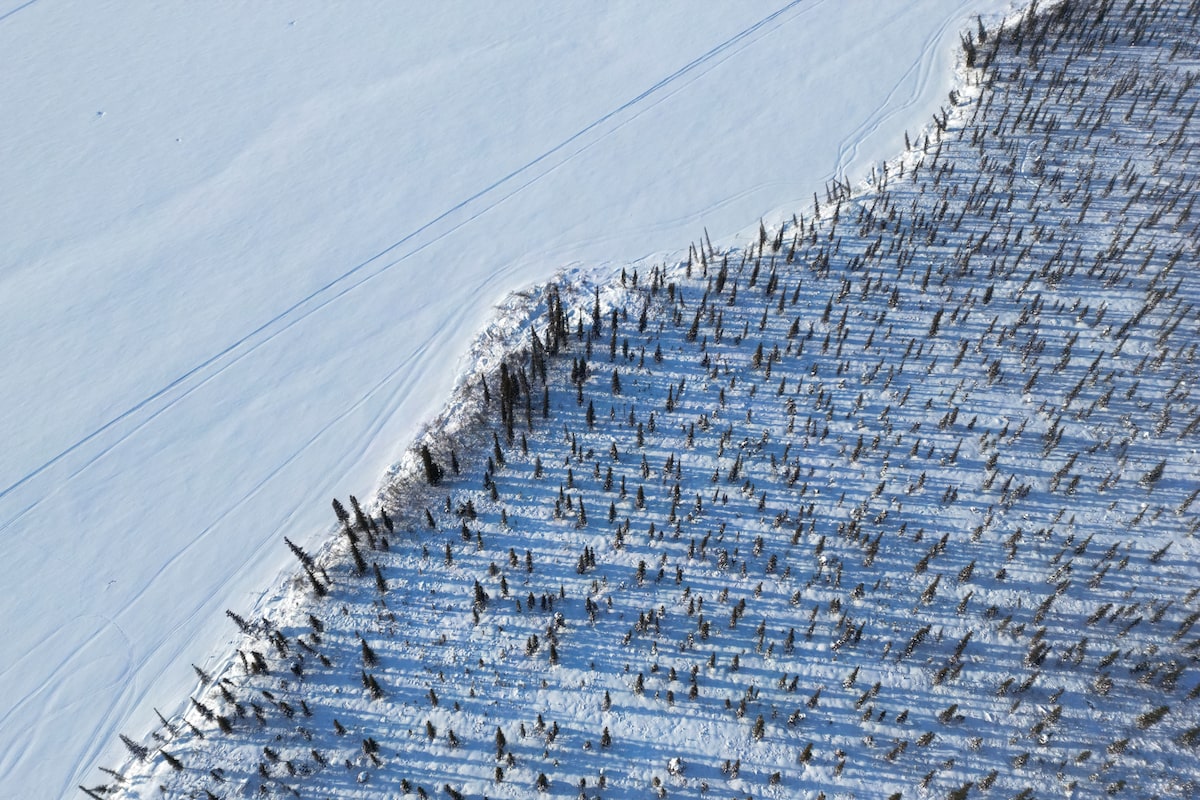Spruce trees in Inuvik, Northwest Territories. The territory’s Finance Minister Caroline Wawzonek says the rest of Canada is realizing that infrastructure in the North has huge defence implications.COLE BURSTON/AFP/Getty Images
Critical infrastructure projects in Canada’s North that have been waiting on federal funding for decades are finally gaining traction as the rest of Canada wakes up to its northern border, Northwest Territories Finance Minister Caroline Wawzonek says.
The projects include a highway connecting the rest of Canada to its most northern edge, an all-season road in a mineral-rich region and an expanded electricity grid unifying several communities.
All three have clear benefits to the northern regions they’re in and would better connect people and infrastructure to much-needed supplies and energy, said Ms. Wawzonek, who is also the territories’ minister responsible for strategic infrastructure, energy and supply chains.
But as the rest of Canada is increasingly realizing, these projects have huge implications for defence and military operations – something the federal government has made clear it’s finally prepared to prioritize, Ms. Wawzonek said at an event held by the Canadian Council for Public-Private Partnerships on Monday.
“It shouldn’t just be the North saying ‘Us, too.’ It should be all Canadians saying ‘Wait a second, we say we’re the true North, strong and free. We say we’re an Arctic nation. But what are we actually doing as a country to invest in it?’ ” she said in an interview.
Arctic Training Centre gives companies a chance to trial defence tech in northern climate
The projects Ms. Wawzonek are pushing include the Mackenzie Valley Highway, the Taltson Hydro Expansion and the Arctic Economic and Security Corridor.
The first is a more than 400-kilometre-long all-season route to permanently connect southern Canada to the Arctic Ocean and replace the current ice roads system. It will require around $3.5-billion in federal investment to build.
The second, a $3.4-billion energy initiative, involves building 320 kilometres of transmission lines to connect industry and 11 communities, or more than 70 per cent of the NWT population, through a unified grid.
The Arctic Economic and Security Corridor is a project that involves developing a mineral-rich region known as the Slave Geological Province and building related infrastructure such as an all-season road. In September, Prime Minister Mark Carney highlighted this early stage development, which will require more than $2-billion in federal funding, as one of handful of priorities for his newly created Major Projects Office.
While the NWT is yet to see Ottawa sign on the dotted line to fully fund its key projects, Ms. Wawzonek said it’s encouraging to have an entity such as the Major Projects Office to connect northern projects with federal funding.
“For the size of the small government that we are, and the Indigenous governments on the lands they are taking place on, these are of a scale and nature that are going to be difficult for us to get across the line on our own,” she said.
Yet, it’s important to the NWT economy that these projects do make it across the line. All three of the territories’ diamond mines are either slated to close in the coming years or face an uncertain future, putting more than 1,000 jobs in limbo as the region’s biggest industry winds down.
Why a boost in defence spending may be the best offence against economic stagnation
By expediting the NWT’s key projects, Ms. Wawzonek said, the federal and provincial governments can open the region up to bigger investments in defence and critical minerals.
For example, thanks to funding of up to $230-million from the Department of National Defence, the Inuvik Airport is gearing up to handle larger military aircraft, including those for North American Aerospace Defence Command (NORAD) operations. Its runway expansion of up to 9,000 feet will make it only the second airport in the Canadian Arctic where fighter jets, such F-35s, could land.
The Canadian Arctic makes up about 40 per cent of Canada’s land mass, according to the Arctic Institute. Its sheer size cannot be understated, and Ms. Wawzonek said this is something the rest of Canada must come to understand if it’s serious about defending it.
“We’re at a point of recognizing that we cannot be this far behind in positioning ourselves in terms of our sovereignty, and continue to stand up and say, ‘We’re an Arctic nation.’ That is no longer internationally acceptable.”

